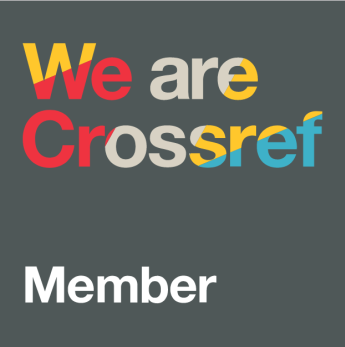Curriculum and learning management: Integration of creative economy value to improve students' life skill
DOI:
https://doi.org/10.21831/jpv.v12i1.44253Keywords:
Creative economy value, curriculum development, integration of learning, vocational high schoolAbstract
The impact of the ASEAN economic community on the development of industry 4.0 is increasingly massive. The education system needs a new buzz to respond to the development of industry 4.0. The Indonesian government continues to make changes and developments in the field of education to prepare learners to become knowledgeable, capable, creative, independent, and responsible human beings. The research uses a qualitative approach, with data collection techniques through observation, interview, and one in the documentation of strengthening life skills with integrase creative economic value. In this study, researchers successfully interviewed the principal, teacher, student, and creative ruler of the alumni element of Grafika Desa Putera Vocational High School (SMK Grafika Desa Putera). The results showed that SMK Grafika Desa Putera integrates the important value of the creative economy for students in adaptive programs, local content, normative, productive, and self-development to produce productive, creative work. Vocational education aims to prepare graduates to be ready to work and innovate. The main purpose of this research is to know the content of the creative economy in shaping learners' life skills.References
Akaninwor, G. I. K. (2001). Toward Effective Curriculum Development in Vocational/Technical Education for Sustainable Poverty Alleviation in Nigeria. In Research Gate (Issue January 2001).
Albashiry, N. M., Voogt, J. M., & Pieters, J. M. (2015). Improving curriculum development practices in a technical vocational community college: examining effects of a professional development arrangement for middle managers. Curriculum Journal, 26(3), 425–451. https://doi.org/10.1080/09585176.2015.1040041
Badan Pusat Statistik Republik Indonesia. (2020). Februari 2020: Tingkat Pengangguran Terbuka (TPT) sebesar 4,99 persen. In bps.go.id. Badan Pusat Statistik Indonesia. https://www.bps.go.id/pressrelease/2020/05/05/1672/februari-2020--tingkat-pengangguran-terbuka--tpt--sebesar-4-99-persen.html
Brinkerhoff, D. A. (2001). Survey of instructional development models, third edition. TechTrends, 45(1), 48–50. https://doi.org/10.1007/BF02763388
Comunian, R., Faggian, A., & Jewell, S. (2015). Digital technology and creative arts career patterns in the UK creative economy. Journal of Education and Work, 28(4), 346–368. https://doi.org/10.1080/13639080.2014.997683
Cummins, A. M., Smith, R., Catling, C., Watts, N., Scarf, V., Fox, D., & Gray, J. (2018). Midwifery Graduate Attributes: A model for curriculum development and education. Midwifery, 61, 66–69. https://doi.org/10.1016/J.MIDW.2018.02.019
D'Andrea, M. (2012). The ontario curriculum in the arts and the creative economy agenda. Arts Education Policy Review, 113(2), 80–88. https://doi.org/10.1080/10632913.2012.656499
Garbin, A. P., & Stover, R. G. (1980). Vocational behavior and career development, 1979: A review. Journal of Vocational Behavior, 17(2), 125–170. https://doi.org/10.1016/0001-8791(80)90001-9
Howkins, J. (2001). The creative economy : How people make money from ideas. Penguin Press.
Malaikosa, Y. M. L., Ulfatin, N., Degeng, N. S., & Maisyaroh, M. (2020). Curriculum management and learning with creative economics to shape life skills. International Journal of Innovation, Creativity and Change, 12(12), 444–456. https://www.ijicc.net/images/vol12/iss12/121239_Malaikosa_2020_E_R.pdf
Masunah, J. (2017). Creative industry: Two cases of performing arts market in Indonesia and South Korea. Humaniora, 29(1), 108–118. https://doi.org/10.22146/jh.22572
Miles, M. B., Huberman, A. M., & Saldana, J. (2019). Qualitative data analysis: A methods sourcebook (4th ed.). SAGE Publications, Inc.
Moleong, L. J. (2014). Metodologi penelitian kualitatif (edisi revisi). Remaja Rosdakarya.
Munastiwi, E. (2015). The management model of vocational education quality assurance using "˜Holistic Skills Education (Holsked).' Procedia - Social and Behavioral Sciences, 204, 218–230. https://doi.org/10.1016/j.sbspro.2015.08.144
Munro, E. (2017). Poetics Building soft skills in the creative economy: Creative intermediaries, business support and the "˜soft skills gap". Poetics, 64, 14–25. https://doi.org/10.1016/j.poetic.2017.07.002
Pane, M. M., & Patriana, R. (2016). The significance of environmental contents in character education for quality of life. Procedia - Social and Behavioral Sciences, 222, 244–252. https://doi.org/10.1016/j.sbspro.2016.05.153
Pratt, A. C., & Hutton, T. A. (2013). Reconceptualising the relationship between the creative economy and the city: Learning from the financial crisis q. Cities, 33, 86–95. https://doi.org/10.1016/j.cities.2012.05.008
Raffe, D. (1991). Assessing the impact of a decentralised initiative: The British technical and vocational education initiative. In S. W. Raudenbush & J. D. Willms (Eds.), Schools, Classrooms, and Pupils (pp. 149–166). Academic Press. https://doi.org/10.1016/B978-0-12-582910-6.50016-2
Rahadian, L. (2019, March 16). Skill tak sesuai, suplai tenaga kerja tak terserap. Ekonomi.Bisnis.Com. https://ekonomi.bisnis.com/read/20190316/12/900380/skill-tak-sesuai-suplai-tenaga-kerja-tak-terserap
Ratnasari, E. D. (2018, February 26). BPS: Lulusan SMK banyak menganggur sepanjang 2017. CNN Indonesia. https://www.cnnindonesia.com/gaya-hidup/20180223141505-282-278333/bps-lulusan-smk-banyak-menganggur-sepanjang-2017
Rokhman, F., Hum, M., Syaifudin, A., & Yuliati Yuliati. (2014). Character education for golden generation 2045 (national character building for indonesian golden years). Procedia - Social and Behavioral Sciences, 141, 1161–1165. https://doi.org/10.1016/j.sbspro.2014.05.197
Schlesinger, P., Selfe, M., & Munro, E. (2015). Inside a cultural agency: Team ethnography and knowledge exchange. Journal of Arts Management Law and Society, 45(2), 66–83. https://doi.org/10.1080/10632921.2015.1039741
Sugiyono, S. (2013). Metode penelitian pendidikan: Pendekatan kuantitatif, kualitatif, dan R & D (17th ed.). Alfabeta.
Sung, T. K. (2015). The creative economy in global competition. Technological Forecasting and Social Change, 96, 89–91. https://doi.org/10.1016/j.techfore.2015.04.003
Tronsmo, E., & Nerland, M. (2018). Local curriculum development as object construction: A sociomaterial analysis. Teaching and Teacher Education, 72, 33–43. https://doi.org/10.1016/j.tate.2018.02.008
Ulfatin, N. (2015). Metode penelitian kualitatif di bidang pendidikan: Teori dan aplikasinya. Media Nusa Creative.
Ulfatin, N. (2016). Pengembangan kurikulum belajar dan berkarya. UM Press.
Widyadharma, A. P., Ulfatin, N., Utaya, S., & Supriyanto, A. (2020). Situational leadership with the STIFIn genetic intelligence approach. Systematic Reviews in Pharmacy, 11(6), 1409–1419. https://doi.org/10.31838/srp.2020.6.202
Wu, Y.-L., & Jia-Jen-Hu, J.-J.-H. (2015). Skill learning attitudes, satisfaction of curriculum, and vocational self-concept among junior high school students of technical education programs. Procedia - Social and Behavioral Sciences, 174, 2862–2866. https://doi.org/10.1016/j.sbspro.2015.01.980
Yuan, Y.-H., Wu, M.-H., & Lee, J.-C. (2014). The essential difference on public or private vocational school – the student's creativity of mechanical engineering. Procedia - Social and Behavioral Sciences, 116, 2321–2329. https://doi.org/10.1016/j.sbspro.2014.01.567
Downloads
Published
How to Cite
Issue
Section
License
The authors submitting a manuscript to this journal agree that, if accepted for publication, copyright publishing of the submission shall be assigned to Jurnal Pendidikan Vokasi. However, even though the journal asks for a copyright transfer, the authors retain (or are granted back) significant scholarly rights.
The copyright transfer agreement form can be downloaded here: [JPV Copyright Transfer Agreement Form]
The copyright form should be signed originally and sent to the Editorial Office through email to jpvokasi@uny.ac.id
Jurnal Pendidikan Vokasi by http://journal.uny.ac.id/index.php/jpv is licensed under a Creative Commons Attribution-ShareAlike 4.0 International License.
















